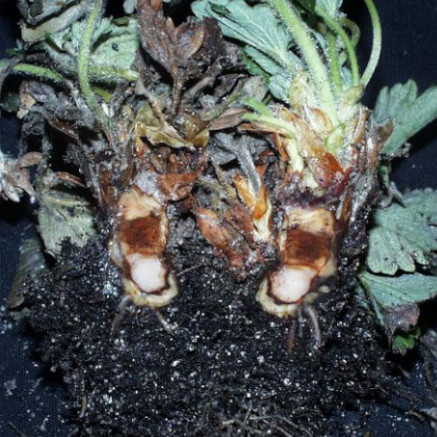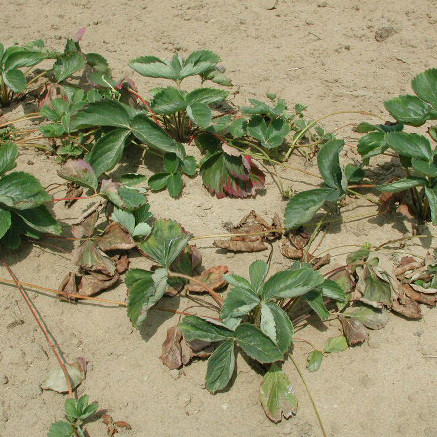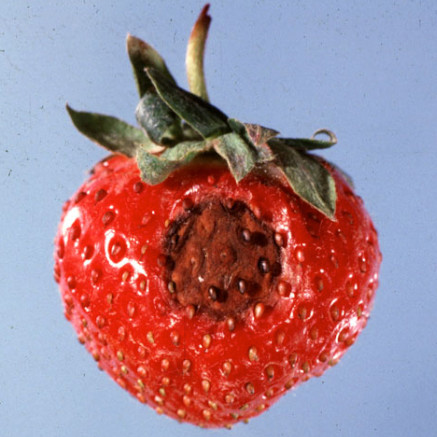Healthy fields. Healthy yields
Strawberries are susceptible to diseases like Crown Rot (Phytophthora Cactorum), Verticillium Wilt (Verticillium Albo-atrum and V. dahliae), and Anthracnose (Colletotrichum acutatum).

Crown Rot
Crown Rot is a soil-inhabiting pathogen, typically seen in strawberries planted in poorly drained, over irrigated soil, or during long periods of rain in warmer climates. The disease progresses rapidly, causing stunting, wilting of leaves, and eventually death.

Verticillium Wilt
Verticillium Wilt is a soil-borne fungus, causing strawberries to wilt, turn brown or reddish-yellow between the veins, and grow dwarfed and blackened tip roots from the crown. Once established, it can survive in the soil for 25 years or longer without proper treatment.

Anthracnose
Anthracnose affects fruit at any stage, seen in the field as petiole, runner, and fruit lesions. These small, sunken spots – brown on green fruit, or black on red fruit – develop and may expand to cover most or even all of the fruit surface. When crown tissue is infected and decays, the entire plant may wilt and die.

